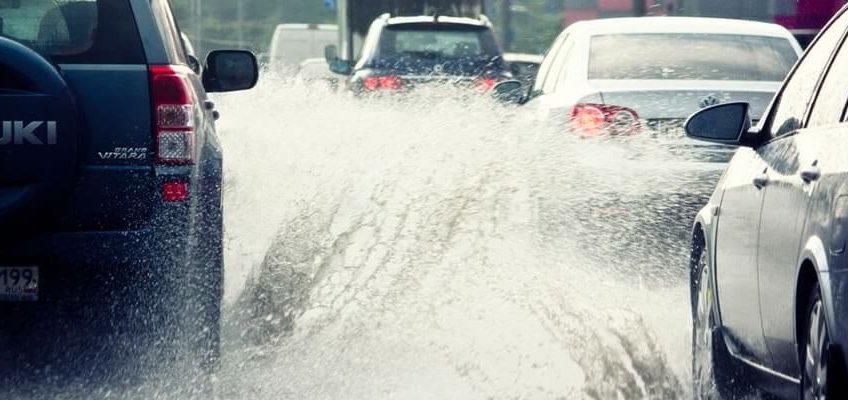
Some recommendations must be followed when driving in wet weather conditions to avoid scares on the road. These recommendations are particularly necessary when driving in the rain on very busy roads, such as the M-30 in Madrid. Additionally, rain is usually accompanied by wind, which can be a driver’s worst enemy. In windy conditions reducing speed and keeping good control of the vehicle is important. If these two factors are kept under control the vehicle will be more stable and, consequently, safer.
The M-30 has 48km of tunnels in which special care must be taken in windy conditions. Whilst the vehicle is travelling in a tunnel the wind disappears. However, strong gusts which can alter the course of the vehicle can be felt when leaving the tunnel. It is therefore necessary to take extra precautions.
As we mentioned above, wet weather driving is different to driving in more favourable weather conditions. Wet surfaces and reduced visibility are the most important factors to take into consideration. Eight recommendations for wet weather driving on the M-30 are laid out below.
Aquaplaning happens when a layer of water builds up between the tyre and the road surface. This leads to less grip on the road surface, which can cause the tyre to lose traction and skid over the water.
Aquaplaning can be very dangerous. To avoid it, check tyre pressure regularly and reduce speed when close to puddles. If you find yourself aquaplaning, keep calm and do not brake. If it happens on a curve, turn just enough to follow the curve and lift your foot off the accelerator.
In heavy rainfall, visibility may be greatly reduced. To ease this, keep windscreen wipers in good working order. Additionally, the windscreen must be clean on both the inside and outside.
Other parts of the car such as the tyres and lights must be kept in good working order since any failings may increase the likelihood of accidents.
In rainy conditions you must use all five senses to focus on the road. Therefore, you must avoid all possible distractions or hindrances. To do so, it is recommended that you do not use cruise control for two reasons: your feet must remain close to the pedals in rainy conditions and in the event of aquaplaning the car may attempt to accelerate to top speed.
In heavy rainfall you must always use the highest part of the road as the rainwater will drain to the lowest part where puddles may form.
If you are driving on the M-30 in rainy conditions, follow the general recommendations issued by the DGT (Directorate General of Traffic) on lane selection. Additionally, it is unlikely that puddles will form on this famous Madrid road.
Be aware of other drivers. A greater distance than normal must be kept between other vehicles and your own. Unexpected braking with sufficient distance between the two cars may prevent a serious accident.
Speed must be reduced, more space left between cars, smoother and less aggressive driving manoeuvres used, and sudden braking or acceleration avoided. Additionally, all puddles and moving water on the road should be avoided.
One of the most dangerous moments is when it starts to rain as the asphalt isn’t very wet yet but a layer of dirt and rainwater forms which causes many accidents. To avoid this, extra precautionary measures must be taken from the first moment it starts to rain. Doing so will prevent any problems.
Lane markings and other road markings are extremely dangerous when it rains as they offer much less grip. Avoid turning or braking on them.
If you follow all these recommendations, then you will have no reason to worry about driving on the M-30 in the rain. Smooth driving with no sudden or abrupt manoeuvres and keeping your vehicle in good working order are the main issues to take into account.
It is also advisable to use caution when driving in windy conditions as well as in rainy conditions. Taking extra safety precautions will reduce dangerous situations on the road.